I wrote a Tkinter app, and I wanted to add screen snipping, so I found a separate program from GitHub (screen-snip) written in PyQt, which I was importing and using in my Tkinter app. Then I decided to combine the programs in order to ask an SO question about why they aren't totally working together. I've learned not to combine Tk and Qt.
So now my question is, should I rewrite my program in Qt, or Tk?
Which is better for this situation?
My currently mixed-Tk/Qt program works when you select an image file, but now the screen-snip portion with Qt class MyWidget(QtWidgets.QWidget): causes it to freeze and then crash.
I think the problem might be a result of mixing Qt with Tk, but I'm not sure.
I originally had two instances of tkinter running, which allowed me to get the screen ship with a new window, but caused trouble with the button window, so I replaced this by trying to use tk.Toplevel
class MyWidget(QtWidgets.QWidget):
def __init__(self, master):
super().__init__()
self.master = master
self.window = tk.Toplevel(self.master)
and that's when I ran into trouble. The widget no longer works at all, and the program crashes without any clues or errors. Any idea why?
Simplified Code:
import tkinter as tk
from tkinter import filedialog
from PIL import ImageTk, Image, ImageGrab
import sys
from PyQt5 import QtWidgets, QtCore, QtGui
import numpy as np
import cv2
class ButtonImg:
def __init__(self, master):
self.newWindow = None
self.master = master
self.fontA = ("arial", 20, "bold")
self.canvas = tk.Canvas(height = 5)
self.canvas.pack()
self.button = tk.Button(bg="#61B5DA", height = 5, text = "Select Image",
font = self.fontA, command = self.changeImage)
self.button.pack(fill="both")
def changeImage(self):
print('open second window')
self.newWindow = tk.Toplevel(self.master)
img = AcquireImage(self.newWindow)
self.master.wait_window(self.newWindow)
print('close second window')
if img.image_selected: # check if image was selected
self.image = img.image_selected
self.button.configure(image=self.image, height=self.image.height())
class AcquireImage:
def __init__(self, master):
self.master = master
self.fontA = ("arial", 20, "bold")
self.frame = tk.Frame(master, bg="#96beed")
self.frame.pack(fill="both", expand=True)
self.button1 = tk.Button(self.frame, text="Select Image File", padx=5, pady=5, bg="#6179DA",
font = self.fontA, command =lambda: self.show_dialogs(1))
self.button1.grid(row=0, column=0, sticky="nsew")
self.button2 = tk.Button(self.frame, text="Get Screen Snip", padx=5, pady=5, bg="#6179DA",
font = self.fontA, command=lambda: self.show_dialogs(2))
self.button2.grid(row=0, column=1, sticky="nsew")
self.image_selected = None
def show_dialogs(self, method):
if method == 1:
ret = filedialog.askopenfilename() #filedialog.askopenfilename(initialdir='/home/user/images/')
if ret:
self.image_selected = ImageTk.PhotoImage(file = ret)
self.master.destroy()
elif method == 2:
newWin = MyWidget(self.master)
newWin.show()
ret = newWin.img
if ret:
self.image_selected = ImageTk.PhotoImage(file = ret)
class MyWidget(QtWidgets.QWidget):
def __init__(self, master):
super().__init__()
self.master = master
self.window = tk.Toplevel(self.master)
screen_width = self.thirdWin.winfo_screenwidth()
screen_height = self.thirdWin.winfo_screenheight()
self.setGeometry(0, 0, screen_width, screen_height)
self.setWindowTitle(' ')
self.begin = QtCore.QPoint()
self.end = QtCore.QPoint()
self.img = None
self.setWindowOpacity(0.3)
QtWidgets.QApplication.setOverrideCursor(
QtGui.QCursor(QtCore.Qt.CrossCursor)
)
self.setWindowFlags(QtCore.Qt.FramelessWindowHint)
print('Capture the screen...')
self.show()
def getRect(self):
# a commodity function that always return a correctly sized
# rectangle, with normalized coordinates
width = self.end.x() - self.begin.x()
height = abs(width * 2 / 3)
if self.end.y() < self.begin.y():
height *= -1
return QtCore.QRect(self.begin.x(), self.begin.y(),
width, height).normalized()
def paintEvent(self, event):
qp = QtGui.QPainter(self)
qp.setPen(QtGui.QPen(QtGui.QColor('black'), 3))
qp.setBrush(QtGui.QColor(128, 128, 255, 128))
qp.drawRect(self.getRect())
def mousePressEvent(self, event):
self.begin = event.pos()
self.end = self.begin
self.update()
def mouseMoveEvent(self, event):
self.end = event.pos()
self.update()
def mouseReleaseEvent(self, event):
self.close()
rect = self.getRect()
self.img = ImageGrab.grab(bbox=(
rect.topLeft().x(),
rect.topLeft().y(),
rect.bottomRight().x(),
rect.bottomRight().y()
))
#self.img.save('capture.png')
self.img = cv2.cvtColor(np.array(self.img), cv2.COLOR_BGR2RGB)
cv2.imshow('Captured Image', self.img)
cv2.waitKey(0)
#cv2.destroyAllWindows()
if __name__ == '__main__':
root = tk.Tk()
app = ButtonImg(root)
root.mainloop()
